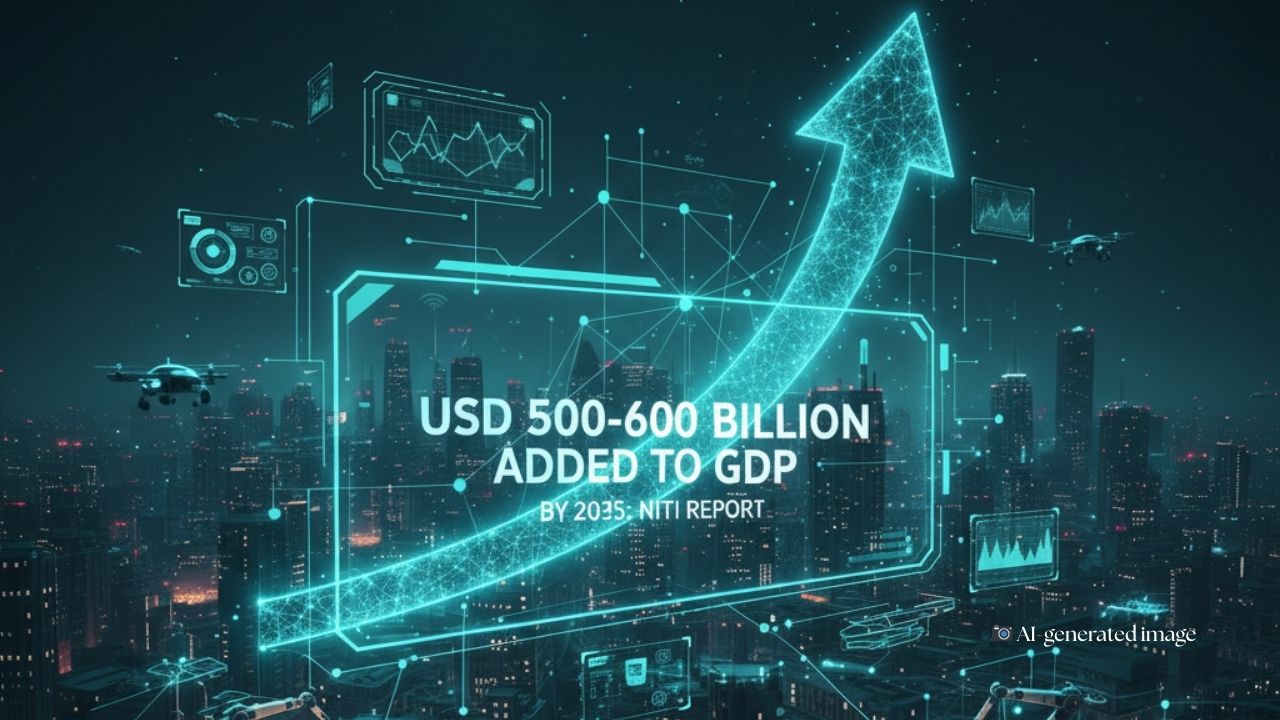Accelerated adoption of Artificial Intelligence (AI) across industries could add between USD 500 and USD 600 billion to India’s GDP by 2035, according to a new report by NITI Aayog. The report, titled ‘AI for Viksit Bharat: The Opportunity for Accelerated Economic Growth’, highlights that this growth would stem from increased productivity and improved workforce efficiency.
The report further states that over the next decade, AI’s adoption across sectors is expected to contribute between USD 17 trillion and USD 26 trillion to the global economy. With a large STEM workforce, a rapidly expanding R&D ecosystem, and growing digital capabilities, India is well positioned to capture 10–15 per cent of the global AI value.
Also Read | PLI Scheme Reopens for AC & LED Makers – Apply by 14 October 2025!
AI’s Dual Impact: Job Creation & Displacement
While AI is expected to create new job opportunities, it may also displace existing roles, particularly in clerical, routine, and low-skill segments. The report warns that industries must proactively adapt to mitigate these effects while leveraging AI’s benefits.
Financial Services & Manufacturing Set to Gain Most
The report identifies financial services and manufacturing as sectors that stand to gain the most from AI integration, with up to 20–25 per cent of their sectoral GDP potentially linked to AI-driven improvements by 2035. AI could unlock an additional USD 50–55 billion in financial services alone through enhanced productivity.
In the financial sector, AI-powered technologies such as automated compliance systems, fraud detection algorithms, and risk management solutions using techniques like secure multi-party computation and federated learning could transform operations. By leveraging alternative data sources, banks can enhance credit decision-making, collections, and portfolio management, making lending more accurate, dynamic, and inclusive.
Bridging the Productivity Gap
The report suggests that AI adoption could bridge 30–35 per cent of the productivity gap in India, benefiting both domestic consumption and export markets. It also highlights how innovation in technology services could further contribute 15–20 per cent to India’s growth by offering advanced solutions and new business models that enhance global competitiveness.
Manufacturing’s AI-Led Growth Potential
In the manufacturing sector, AI-driven productivity gains could unlock between USD 85 and USD 100 billion over and above current growth projections by 2035. This would be a significant boost to India’s economic development.
Also Read | TCIL and PNB Join Forces to Revolutionise Digital Banking in India
Growth Trajectory Under Viksit Bharat
India’s GDP is currently projected to reach USD 6.6 trillion by 2035 at a 5.7 per cent annual growth rate. However, under the government’s aspirational goal of achieving an 8 per cent growth trajectory outlined in the Viksit Bharat vision, the GDP could rise to USD 8.3 trillion, adding an incremental USD 1.7 trillion compared to the existing growth path.
NITI Aayog CEO Highlights AI’s Role in Economic Expansion
BVR Subrahmanyam, CEO of NITI Aayog, emphasised in his foreword that achieving the 8 per cent annual growth target requires significantly raising productivity across sectors and unlocking innovation-driven expansion. He noted that AI could serve as a decisive lever to achieve these goals. By adopting sector-specific strategies, industries like banking and manufacturing can immediately begin improving efficiency, service quality, and competitiveness—creating momentum for deeper transformation.




